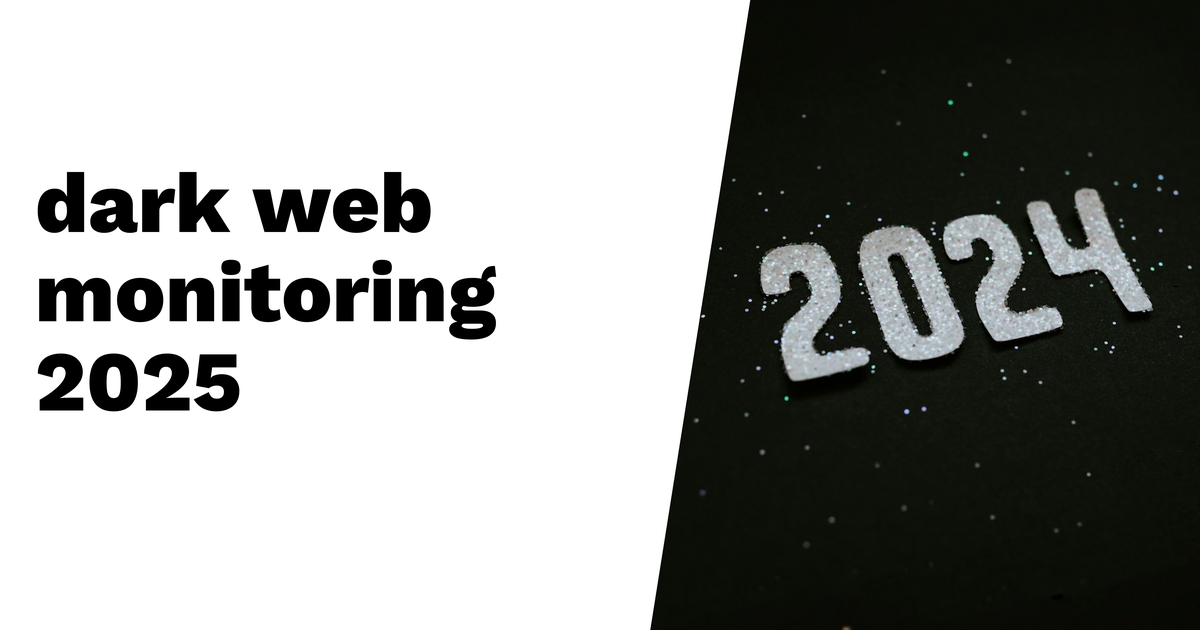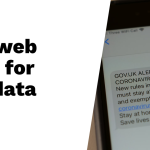Dark web monitoring is an essential tool for organizations, helping them track, analyze, and respond to risks associated with stolen data. Its main purpose isn’t to stop breaches from happening but to provide early warnings so businesses can act quickly before cybercriminals take advantage of compromised information. With the rise in cybercrime and sophisticated threats like Ransomware-as-a-Service by 2025, companies must embrace this proactive cybersecurity measure. Effective dark web monitoring not only safeguards sensitive customer data but also helps meet compliance standards and maintains trust. As technology evolves, integrating AI into these processes will enhance their ability to detect threats in real-time.
Table of Contents
- Understanding Dark Web Monitoring
- The Importance of Dark Web Monitoring
- Key Trends in Dark Web Monitoring for 2025
- Benefits of Dark Web Monitoring
- Features to Look For in Dark Web Monitoring Services
- Common Threats Found on the Dark Web
- Implementation Strategies
- Real-World Examples and Case Studies
- Frequently Asked Questions
1. Understanding Dark Web Monitoring

dark web monitoring is the process of tracking hidden areas of the internet that search engines do not index. This part of the web is often associated with illegal activities, making it critical for organizations to keep an eye on it. Monitoring helps identify if sensitive data is being sold or shared without permission, providing alerts that enable organizations to respond swiftly to potential data breaches. Automated systems are commonly used to scan various dark web forums and marketplaces, searching for stolen credentials, financial information, and other compromised data.
To effectively monitor the dark web, organizations need to understand what specific types of data are at risk. This could include anything from employee information to customer details. The dark web is layered, comprising private networks and encrypted sites, which can complicate monitoring efforts. Therefore, having a grasp of the structure and nature of the dark web is essential for developing effective monitoring strategies.
It’s important to note that dark web monitoring is not solely about finding stolen data. It’s also about gaining insights into the threat actors operating there. Understanding their methods and motivations can help organizations bolster their defenses. Effective dark web monitoring combines advanced technology with human analysis, ensuring that alerts are not only generated but also interpreted correctly to guide appropriate actions.
2. The Importance of Dark Web Monitoring

As cyber threats become more sophisticated, dark web monitoring is increasingly crucial for organizations. It serves as a proactive measure, allowing businesses to identify potential breaches before they escalate. By keeping an eye on the dark web, companies can protect sensitive customer and proprietary data, minimizing the risk of leaks that could harm their reputation. If sensitive information is leaked without detection, the fallout can be devastating, leading to loss of customer trust and costly recovery efforts.
Moreover, dark web monitoring can highlight vulnerabilities within an organization’s security posture, offering insights that can improve overall cybersecurity strategies. It aids in incident response planning by providing early warnings about compromised data, which is essential in today’s fast-paced digital environment. Companies can also leverage these findings to understand emerging threats, which can complement existing security measures such as firewalls and antivirus software.
Proactive detection through dark web monitoring can prevent significant financial losses associated with data breaches. It also allows organizations to gauge the effectiveness of their current security measures. Beyond internal security, monitoring can reveal insights into competitor vulnerabilities, providing a broader perspective on the threat landscape. In essence, dark web monitoring is a necessary component of a comprehensive cybersecurity strategy, helping organizations stay one step ahead in a constantly evolving threat environment.
3. Key Trends in Dark Web Monitoring for 2025
In 2025, dark web monitoring will be significantly shaped by several key trends. First, machine learning algorithms will increasingly be used to analyze dark web data, making it easier to detect patterns and anomalies that signal potential threats. Organizations will also seek partnerships with specialized firms to enhance their monitoring capabilities, allowing them to respond more quickly to emerging risks.
Another important trend is the integration of threat intelligence into monitoring systems. This will enable organizations to correlate dark web findings with known vulnerabilities and attack vectors, ultimately strengthening their cybersecurity posture. As privacy regulations continue to evolve, the way data is monitored on the dark web will also be influenced, necessitating a careful balance between effective monitoring and compliance.
Moreover, the dark web landscape is expected to evolve with new technologies, making adaptability essential. As cybercriminals innovate, particularly with the rise of decentralized platforms, traditional monitoring methods may face challenges. Organizations will need to pivot from focusing solely on physical assets to also consider digital assets and cryptocurrencies. Additionally, the demand for advanced monitoring solutions will likely surge due to the increasing frequency of consumer data breaches.
Lastly, collaboration among industries will be crucial in understanding and mitigating threats. Law enforcement’s growing involvement in tracking dark web activities will also contribute to a more comprehensive approach to cybersecurity.
4. Benefits of Dark Web Monitoring
Dark web monitoring provides several key benefits that can significantly enhance an organization’s security posture. One of the primary advantages is early threat detection. By identifying compromised data or potential breaches before they escalate, organizations can take timely actions to mitigate risks. This proactive approach can prevent minor issues from evolving into major incidents, saving both time and resources.
Real-time alerts are another critical feature of dark web monitoring. When sensitive information is detected on the dark web, organizations receive immediate notifications, allowing them to respond quickly and effectively. This swift action can make a substantial difference in minimizing damage and protecting valuable data.
Furthermore, the cost efficiency of dark web monitoring cannot be overlooked. Preventing a data breach can save companies from substantial financial losses, which often include legal fees, recovery costs, and potential fines from regulatory bodies. In many cases, the savings from avoiding a breach far outweigh the costs associated with monitoring services.
Enhanced customer trust is also a significant benefit. When organizations demonstrate a commitment to data security through active monitoring, they instill confidence in their customers, which can improve brand reputation and attract new business. Additionally, insights gained from monitoring can inform employee training programs, helping staff understand the importance of cybersecurity and the evolving threats they may face.
Finally, organizations can leverage monitoring data to negotiate better terms with cyber insurance providers. Having comprehensive monitoring in place shows insurers that the organization takes cybersecurity seriously, potentially resulting in lower premiums or better coverage options. Overall, dark web monitoring not only protects sensitive information but also fosters a culture of security within the organization.
5. Features to Look For in Dark Web Monitoring Services
When selecting dark web monitoring services, there are several key features to consider. First, look for services that provide a clear and comprehensive threat assessment. This ensures that you understand the risks your organization faces. Customizable alerts tailored to your specific needs are essential, allowing you to prioritize what matters most. The search capabilities should include a wide range of dark web forums and marketplaces, ensuring thorough monitoring of potential threats.
User-friendly dashboards can enhance visibility and understanding of threats, making it easier for your team to respond appropriately. Data encryption and privacy measures are critical for reputable services, as they help protect your sensitive information. Regular reporting and analysis should be part of the service, allowing you to track trends over time and adjust your strategies accordingly.
Additionally, integration with existing security tools can streamline response efforts, making your overall cybersecurity posture more effective. Responsive customer support is another vital feature, as it can assist your organization during critical situations. Consideration for regional compliance and regulations should also be included in services, ensuring that you meet all necessary legal obligations. Lastly, flexibility in subscription models can help you choose a plan that fits your organization’s size and needs.
| Feature | Description |
|---|---|
| Comprehensive Coverage | Ability to scan a wide range of dark web sources, including marketplaces and forums. |
| Customizable Monitoring | Tailored features to meet specific organizational needs. |
| 24/7 Continuous Monitoring | Ensures constant vigilance against potential threats. |
| Risk Assessment Reports | Detailed evaluations of detected threats and recommended actions. |
6. Common Threats Found on the Dark Web
The dark web is a haven for various threats that pose significant risks to individuals and organizations alike. Personal information, such as Social Security Numbers, is frequently traded, making identity theft alarmingly easy for cybercriminals. Fraudulent activities thrive in this environment, with stolen credentials like usernames and passwords being sold to facilitate unauthorized access to accounts. Financial fraud schemes are openly discussed on dark web forums, where hackers share techniques for executing scams.
In addition to personal data, hacked databases containing valuable corporate information can often be found for sale, leaving businesses vulnerable to espionage. Aspiring cybercriminals can purchase exploit kits and hacking tools, lowering the barrier to entry for malicious activities. Phishing kits, along with training manuals on social engineering, are commonly shared, enabling even inexperienced hackers to launch attacks.
Moreover, illegal services such as DDoS attacks and account takeovers can be hired out, turning cybercrime into a service for those willing to pay. Compromised email accounts are a common commodity, allowing attackers to infiltrate organizations with ease. Insider threats may also emerge from connections made on the dark web, further complicating the security landscape. As cybercriminals share tips and techniques, the threats they pose continue to evolve, making dark web monitoring a critical necessity for safeguarding sensitive information.
- Personal information such as Social Security Numbers is frequently traded.
- Fraudulent activities, including identity theft, are rampant in dark web markets.
- Hacked databases containing corporate information can be found for sale.
- Exploit kits and hacking tools are readily available to aspiring cybercriminals.
- Phishing kits and training manuals for social engineering are commonly shared.
- Financial fraud schemes are often discussed and advertised in dark web forums.
- Illegal services like DDoS attacks and account takeovers are offered for hire.
- Compromised email accounts are a common commodity on the dark web.
- Insider threats can also be facilitated through connections made on the dark web.
- Cybercriminals often share tips and techniques, leading to the evolution of threats.
7. Implementation Strategies
To effectively implement dark web monitoring, start by assessing your current security measures. Identify any gaps that may leave your organization vulnerable. Choosing the right monitoring service is crucial; it should align with your specific needs and threat landscape. Once you have a monitoring service in place, create a response plan detailing the steps to take if any threats are detected. Engagement with stakeholders is essential to secure buy-in for these monitoring efforts, ensuring everyone understands their importance.
Regularly update your monitoring protocols to adapt to new threats and changes in the dark web environment, as cybercriminal tactics evolve quickly. Utilize threat intelligence to enhance your monitoring strategies and make informed decisions. Consider conducting regular training sessions for employees to keep them informed about potential threats and the importance of vigilance.
Establish clear communication channels for reporting and responding to alerts. Monitoring the effectiveness of your dark web monitoring service is vital; continuous evaluation will help you identify areas for improvement. Encourage feedback from all levels of the organization to refine and enhance your monitoring processes.
8. Real-World Examples and Case Studies
Real-world examples of dark web incidents underscore the importance of monitoring. The Silk Road case exemplifies how the dark web serves as a hub for illegal activities, including drug trafficking and data theft. Similarly, the Ashley Madison breach revealed how personal data can be exposed, impacting millions of users and emphasizing the need for robust data security measures.
The Equifax data breach stands as a stark reminder of the consequences of inadequate monitoring. Sensitive data of over 147 million people was compromised, illustrating the critical need for organizations to actively monitor potential threats. In the retail sector, the Target credit card breach was a wake-up call, showing that even large companies can fall victim if they do not take dark web risks seriously.
Yahoo’s multiple breaches over several years highlight how long data can remain vulnerable in the absence of monitoring. The Capital One breach further demonstrated that cloud security and monitoring must go hand in hand to protect sensitive information.
The WannaCry ransomware attack showcased the significance of timely threat detection, as it affected thousands of organizations worldwide, leading to massive disruptions. The Marriott data breach illustrated how vulnerabilities in third-party services can jeopardize data security, impacting millions of guests.
Moreover, the Experian breach revealed that even credit reporting agencies, which hold vast amounts of sensitive data, can be compromised without proper monitoring. Finally, the Facebook leak incident highlighted the risks associated with social media data exposure, reinforcing the need for continuous vigilance in monitoring personal information.
Frequently Asked Questions
1. What is dark web monitoring and why is it important?
Dark web monitoring is a process that helps check the dark web for your personal information, like your email or passwords. It’s important because if your info is found there, it could mean someone might try to steal your identity or commit fraud.
2. How does dark web monitoring work?
Dark web monitoring works by using special tools that scan hidden parts of the internet, where illegal activities happen. These tools look for any signs of your information being shared or sold.
3. Who needs dark web monitoring services?
Anyone who wants to protect their identity or sensitive data can benefit from dark web monitoring. This includes individuals, businesses, and organizations that want to keep their information safe from hackers.
4. What kinds of personal information can dark web monitoring find?
Dark web monitoring can find various types of personal information, such as email addresses, social security numbers, credit card details, and even passwords that may have been leaked or sold.
5. What should I do if my information is found on the dark web?
If your information is found on the dark web, it’s important to act quickly. Change your passwords immediately, consider enabling two-factor authentication, and monitor your accounts for any unusual activity.
TL;DR Dark web monitoring is crucial for organizations to identify stolen data and prevent breaches. In 2025, the rise of cybercrime, AI integration, and ransomware-as-a-service make monitoring more important than ever. Benefits include early threat detection, real-time alerts, and improved customer trust. Key features to look for in services include comprehensive coverage, continuous monitoring, and risk assessment reports. Common threats include stolen credentials and financial data. Implementing effective strategies and learning from real-world breaches can help organizations safeguard sensitive information and maintain compliance.





